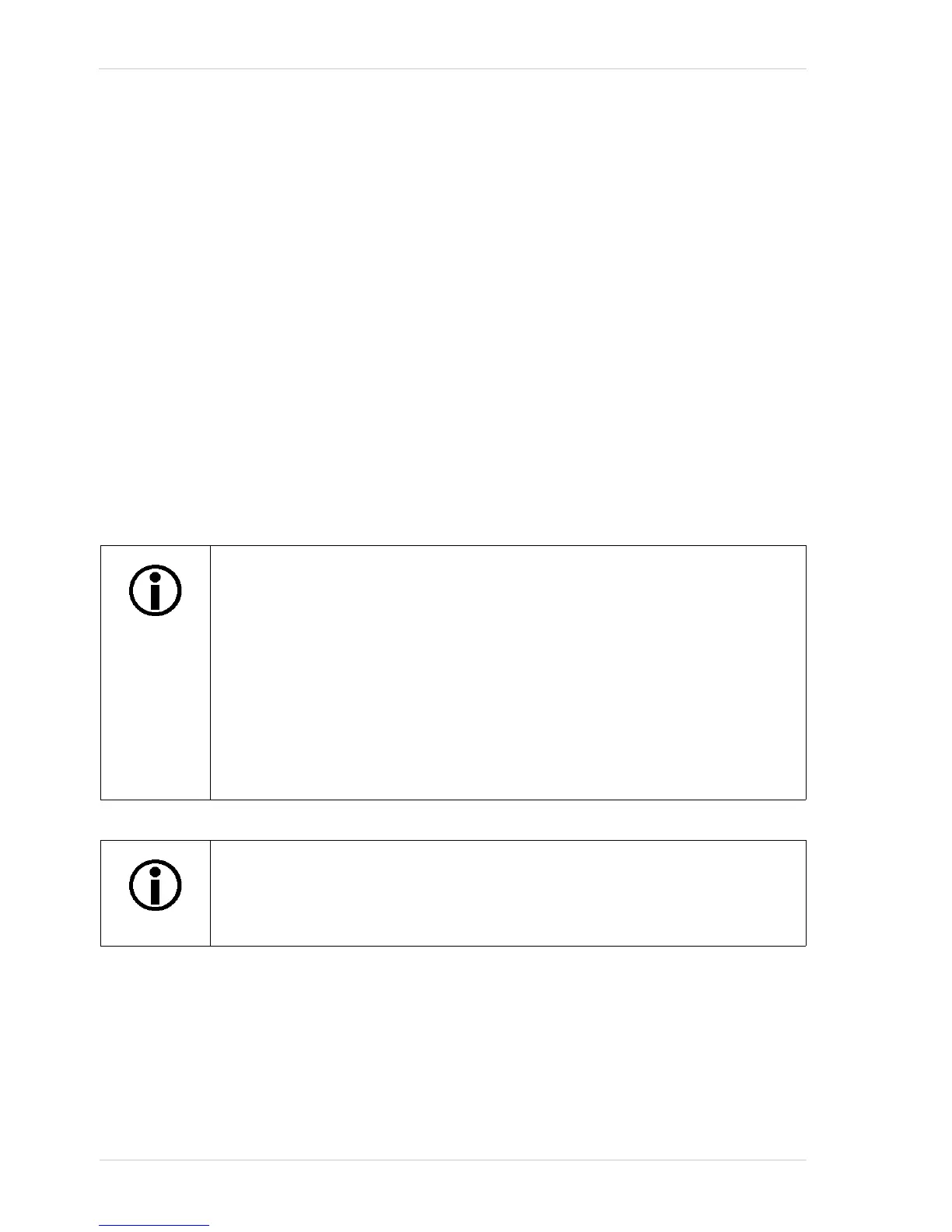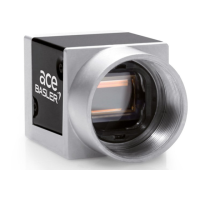Standard Features AW00097603000
196 Basler aviator GigE
The regular cycling through the sequence sets according to the Auto or Controlled advance modes
can be modified at any time during the cycling:
a restart starts a new sequence set cycle before the previous cycle is completed.
The restart can be controlled
by the states of an input line (controlled sequence advance only);
or
by a software command
a non-cyclical advance allows to skip a sequence set and will advance to the sequence set
after the next. The non-cyclical advance can be controlled
by the states of an input line
or
by a software command.
Advance or restart controlled by an input line are also called "synchronous advance" and
"synchronous restart" because the checking of the states of an input line is always linked to a frame
trigger signal.
Advance or restart controlled by a software command are also called "asynchronous advance" and
"asynchronous restart" because they are not linked to a frame start trigger signal.
Using the Load Command
There is also the Sequence Set Load command that may be useful when working with the sequence
sets for testing purposes. If you use the Sequence Set Selector parameter to select a sequence set
and then you execute the Sequence Set Load command, the sequence parameter values in the
active set will be replaced by the values stored in the selected sequence set.
Synchronous advance and restart are part of the standard operation of the
sequencer feature and should generally be used. Asynchronous advance and
restart are not suitable for standard operation because of the associated delays:
The delay between sending a software command and it becoming effective will
depend on the specific installation and the current load on the network.
Accordingly, the number of image acquisitions that may occur between sending
the software command and it becoming effective can not be predicted.
Asynchronous advance and restart are therefore not suitable for real-time
applications, they may, however, be useful for testing purposes.
We strongly recommend to only use synchronous advance and synchronous
restart for real-time applications.
You can use the Sequence Set Index chunk feature to add a chunk to each
acquired frame. The chunk contains the index number of the sequence set that
was used for the frame acquisition. For more information about the Sequence set
Index chunk, see the "Chunk Features" section.
